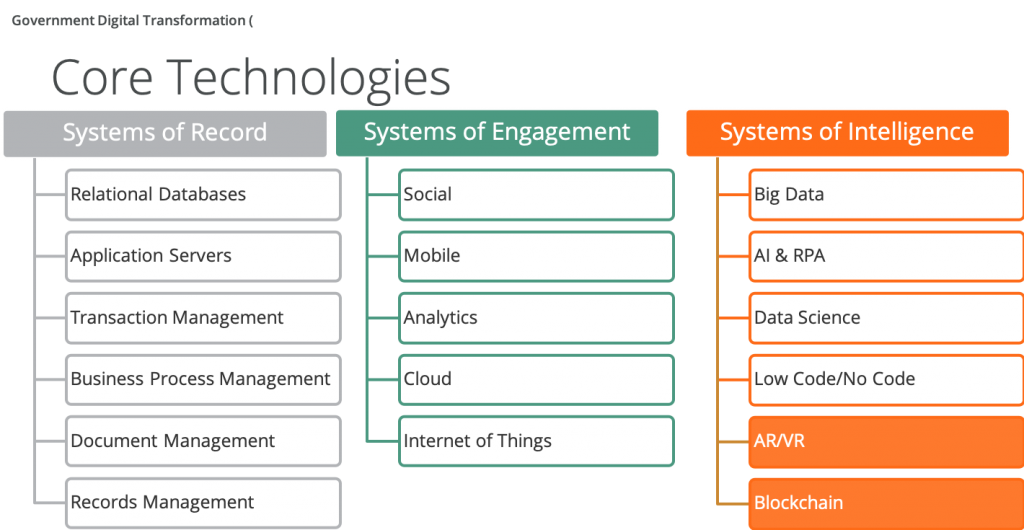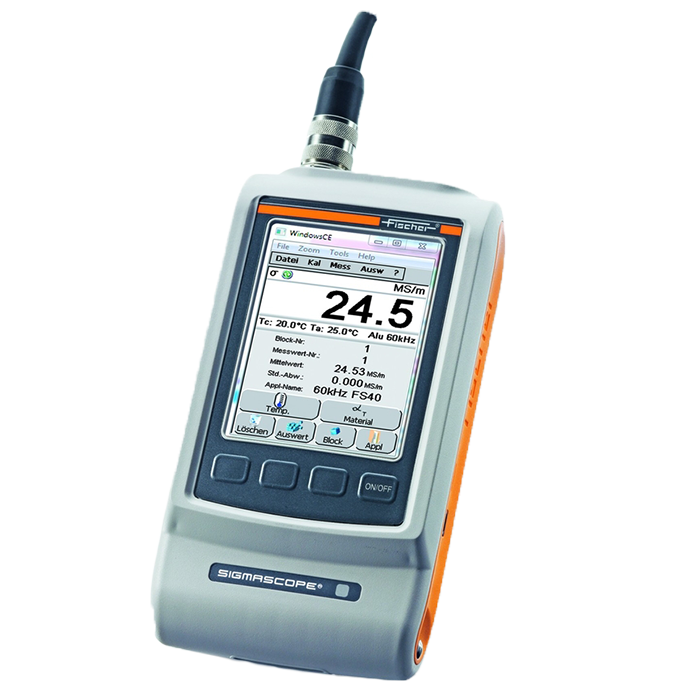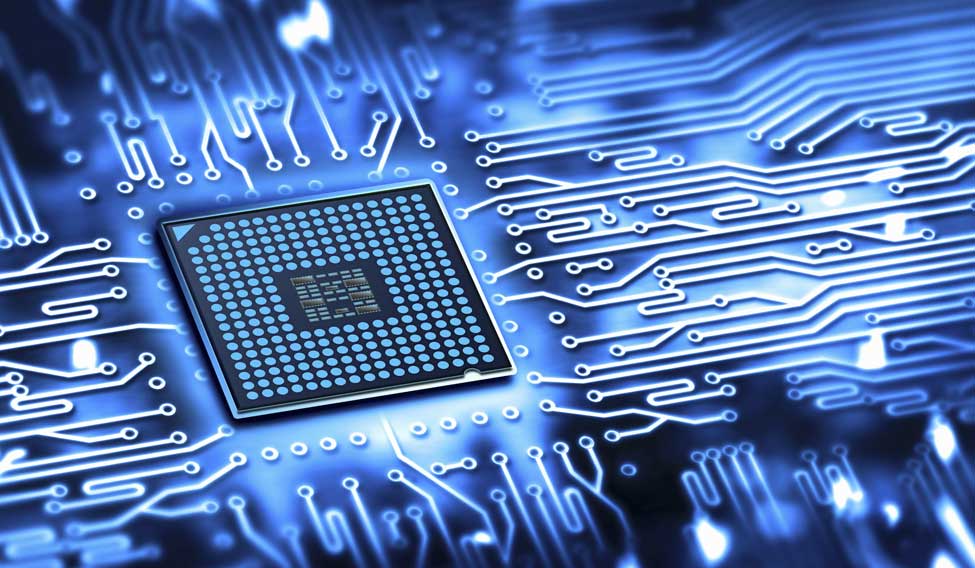Technology Foundations: Building the Future
Technology Foundations is the bedrock upon which our modern world is built. It’s the story of how human ingenuity has shaped the world around us, from the invention of the […]

Technology Foundations is the bedrock upon which our modern world is built. It’s the story of how human ingenuity has shaped the world around us, from the invention of the printing press to the rise of artificial intelligence. This exploration delves into the historical evolution of technology, the core principles that guide its development, and the profound impact it has on society.
Understanding these foundations is crucial for navigating the ever-changing technological landscape. It provides a framework for understanding the forces driving innovation, the challenges we face, and the possibilities that lie ahead.
Historical Evolution of Technology Foundations
The history of technology is a fascinating journey that spans millennia, marked by groundbreaking inventions and discoveries that have transformed human civilization. From the earliest tools to the sophisticated technologies of today, each advancement has built upon the foundations laid by its predecessors. This evolution, driven by human ingenuity and a relentless pursuit of progress, has shaped the world we live in today.
The Dawn of Technology
The earliest technological innovations emerged from the basic needs of survival and the desire to improve the human condition. Tools such as the hand axe, spear, and bow and arrow, dating back to the Stone Age, marked the beginning of human technological development. These simple tools allowed early humans to hunt, gather food, and protect themselves, significantly enhancing their chances of survival.
The Printing Press and the Dissemination of Knowledge
The invention of the printing press by Johannes Gutenberg in the 15th century was a revolutionary breakthrough that had a profound impact on the dissemination of knowledge and the spread of literacy. Prior to the printing press, books were painstakingly copied by hand, making them expensive and scarce. The printing press, however, allowed for the mass production of books, making them accessible to a wider audience. This led to a surge in literacy rates and a flourishing of intellectual and scientific thought.
The Steam Engine and the Industrial Revolution
The steam engine, invented by James Watt in the 18th century, was another pivotal invention that ushered in the Industrial Revolution. The steam engine provided a new source of power, replacing human and animal labor and driving the development of new machines and factories. This revolutionized production, leading to increased efficiency, mass production, and the rise of new industries.
The Computer and the Information Age
The invention of the computer in the 20th century marked the beginning of the Information Age, an era characterized by the rapid growth and dissemination of information. The computer, with its ability to process and store vast amounts of data, has revolutionized communication, commerce, and almost every aspect of human life.
The Evolution of Technology Across Eras
Technology has evolved at an accelerating pace throughout history, with each era marked by significant advancements.
- The Stone Age (c. 2.6 million years ago – c. 3300 BCE) saw the development of basic tools, such as hand axes, spears, and bow and arrow, as well as the discovery of fire.
- The Bronze Age (c. 3300 BCE – c. 1200 BCE) witnessed the development of metalworking, leading to the creation of weapons, tools, and ornaments made of bronze.
- The Iron Age (c. 1200 BCE – c. 500 CE) marked the widespread use of iron, leading to the development of stronger weapons, tools, and agricultural implements.
- The Middle Ages (c. 500 CE – c. 1500 CE) saw significant advancements in architecture, engineering, and agriculture, with the construction of cathedrals, castles, and the development of new farming techniques.
- The Renaissance (c. 14th – 17th centuries) witnessed a renewed interest in classical learning and a surge in scientific and artistic innovation.
- The Scientific Revolution (16th – 18th centuries) was a period of unprecedented scientific discovery, marked by the work of figures like Copernicus, Galileo, and Newton.
- The Industrial Revolution (18th – 19th centuries) saw the development of new machines and factories, powered by the steam engine, leading to mass production and the rise of new industries.
- The Information Age (20th – 21st centuries) is characterized by the rapid growth and dissemination of information, driven by the development of the computer and the internet.
Key Milestones in Technological Evolution
- The invention of the wheel (c. 3500 BCE) revolutionized transportation and trade.
- The development of writing (c. 3000 BCE) enabled the recording and transmission of knowledge.
- The invention of the printing press (15th century) made books accessible to a wider audience, leading to a surge in literacy and intellectual thought.
- The steam engine (18th century) provided a new source of power, driving the Industrial Revolution.
- The invention of the telephone (19th century) revolutionized communication.
- The development of the computer (20th century) marked the beginning of the Information Age.
- The invention of the internet (20th century) connected people and information globally.
Impact of Significant Inventions
- The printing press enabled the mass production of books, making knowledge more accessible and contributing to the spread of literacy and intellectual thought.
- The steam engine revolutionized production, leading to increased efficiency, mass production, and the rise of new industries. It also paved the way for the development of railroads and other forms of transportation.
- The computer has revolutionized communication, commerce, and almost every aspect of human life. It has enabled the storage and processing of vast amounts of data, leading to advancements in medicine, science, and technology.
Core Principles of Technology Foundations
Technology is not merely a collection of gadgets and devices. It is built upon a foundation of fundamental principles derived from various scientific disciplines. These principles serve as the guiding lights, enabling us to understand, design, and advance technological systems.
Scientific Discoveries and Technological Advancements
Scientific discoveries are the bedrock of technological advancements. They provide the theoretical framework and empirical evidence that underpin the development of new technologies.
- Newton’s Laws of Motion: These laws, formulated by Sir Isaac Newton in the 17th century, describe the relationship between force, mass, and motion. They are fundamental to understanding the behavior of objects in motion, from simple machines to complex spacecraft. For example, the development of rockets and satellites relies heavily on Newton’s laws.
- Maxwell’s Equations: James Clerk Maxwell’s equations, published in the 19th century, unified electricity and magnetism, leading to the understanding of electromagnetic waves. These equations laid the foundation for technologies like radio, television, and wireless communication.
- Quantum Mechanics: This theory, developed in the early 20th century, revolutionized our understanding of the behavior of matter and energy at the atomic and subatomic levels. Quantum mechanics has been instrumental in the development of transistors, lasers, and other modern technologies.
Mathematical Concepts in Technology
Mathematics plays a crucial role in technology by providing a language and tools for modeling, analyzing, and optimizing systems.
- Calculus: This branch of mathematics deals with rates of change and accumulation. It is essential for understanding and designing systems involving motion, growth, and decay. For example, calculus is used in designing aircraft, predicting population growth, and analyzing financial markets.
- Linear Algebra: This field of mathematics focuses on vectors and matrices, which are essential for representing and manipulating data in computer science and other technological fields. It is used in image processing, machine learning, and computer graphics.
- Probability and Statistics: These areas of mathematics deal with uncertainty and data analysis. They are crucial for understanding random events, making predictions, and drawing conclusions from data. They are used in areas like weather forecasting, medical diagnosis, and financial modeling.
Key Technological Components
Technological systems are complex entities composed of various interconnected components that work together to achieve a specific goal. Understanding the key components and their interactions is crucial for comprehending how technology functions and its impact on society. This section explores the fundamental components of technological systems, encompassing hardware, software, and networks.
Components of Technological Systems
The following table summarizes the essential components of various technological systems:
| Component | Description | Examples |
|—|—|—|
| Hardware | Physical components of a technological system. | Computers, smartphones, servers, routers, cables, printers, etc. |
| Software | Programs and instructions that tell the hardware what to do. | Operating systems, applications, databases, programming languages, etc. |
| Networks | Systems that connect devices and allow communication. | Internet, Wi-Fi, Bluetooth, Ethernet, etc. |
Hardware
Hardware comprises the physical components of a technological system. These components are tangible and can be touched. Examples of hardware include computers, smartphones, servers, routers, cables, printers, and storage devices. Each hardware component plays a specific role in the overall functionality of the system.
Types of Hardware
- Input Devices: Devices that allow users to input data into the system. Examples include keyboards, mice, touchscreens, scanners, and microphones.
- Output Devices: Devices that display or present information processed by the system. Examples include monitors, speakers, printers, and projectors.
- Processing Units: Devices responsible for executing instructions and performing calculations. Examples include CPUs (Central Processing Units) and GPUs (Graphics Processing Units).
- Storage Devices: Devices that store data for long-term use. Examples include hard drives, SSDs (Solid State Drives), and flash drives.
- Networking Devices: Devices that connect computers and other devices within a network. Examples include routers, switches, and modems.
Software
Software consists of programs and instructions that control the behavior of the hardware. It acts as the brain of the system, telling the hardware what to do and how to do it. Software can be broadly categorized into two types: system software and application software.
System Software
System software is the foundation upon which other software programs run. It manages the hardware resources and provides a platform for applications. Examples of system software include operating systems, device drivers, and utility programs.
Application Software
Application software performs specific tasks for users. It is designed to address specific needs, such as word processing, web browsing, gaming, and data analysis. Examples of application software include Microsoft Word, Google Chrome, Fortnite, and Excel.
Networks
Networks are systems that connect devices and allow communication between them. They enable the sharing of resources, data, and information. Networks can be classified based on their geographic scope and connectivity.
Types of Networks
- Local Area Network (LAN): Connects devices within a limited geographical area, such as a home or office. Examples include home Wi-Fi networks and office networks.
- Wide Area Network (WAN): Connects devices over a large geographical area, spanning cities, countries, or even continents. The internet is a prime example of a WAN.
- Metropolitan Area Network (MAN): Connects devices within a metropolitan area, covering a larger geographical area than a LAN but smaller than a WAN.
Interconnectedness of Components
Technological systems are characterized by the interconnectedness of their components. Hardware, software, and networks work together seamlessly to achieve a common goal. For instance, a computer system relies on the interaction of its hardware components (CPU, memory, storage devices, input/output devices) to execute software programs. Networks connect computers and allow them to communicate, share resources, and access data.
“The key to understanding complex systems lies in recognizing the intricate web of relationships between their constituent components.”
Impact of Technology Foundations on Society
Technology has fundamentally reshaped the fabric of human civilization, leaving an indelible mark on every aspect of our lives. From the way we communicate to the way we travel and receive healthcare, technological advancements have driven profound transformations, shaping societies and influencing the course of history.
Transformative Impact on Human Life
Technological advancements have revolutionized communication, making it faster, easier, and more accessible than ever before. The invention of the telegraph in the 19th century enabled instantaneous communication across vast distances, revolutionizing business, politics, and personal relationships. The subsequent development of the telephone, radio, and television further expanded the reach and impact of communication, connecting people and cultures like never before. Today, the internet and mobile devices have created a global network of interconnected individuals, facilitating real-time communication and information sharing.
Social, Economic, and Cultural Implications
Technological innovations have profound social, economic, and cultural implications. The rise of the internet and social media has created new forms of social interaction, fostering online communities and influencing public discourse. E-commerce has transformed the way we shop, creating global markets and disrupting traditional retail models. Automation and artificial intelligence are changing the nature of work, leading to increased productivity and job displacement.
Examples of Technology Shaping Societies, Technology foundations
Throughout history, technological innovations have played a pivotal role in shaping societies and influencing the course of history. The invention of the printing press in the 15th century revolutionized knowledge dissemination, leading to the spread of literacy and the rise of the Renaissance. The Industrial Revolution, driven by advancements in steam power and machinery, transformed economies, leading to mass production, urbanization, and social upheaval. The development of antibiotics and vaccines in the 20th century significantly improved public health, increasing life expectancy and reducing disease burden.
End of Discussion

As we stand on the cusp of a new era defined by technological advancements, understanding the foundations that brought us here is more important than ever. By appreciating the historical journey, grasping the core principles, and recognizing the impact on society, we can better navigate the future and harness the power of technology for the betterment of humanity.
Understanding the technology foundations of lighting systems is crucial for optimizing energy efficiency and creating the right ambiance. One key component in this system is the ballast, which regulates the flow of electricity to the light source. For instance, the universal lighting technologies ballast offers a versatile solution for various types of lighting fixtures, showcasing the advancements in modern lighting technology.
By understanding the underlying technology behind these components, we can make informed decisions about lighting choices and create sustainable, efficient, and visually appealing environments.









